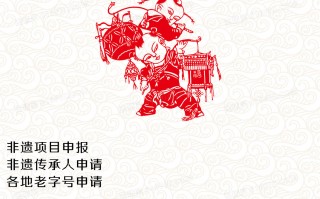
总算到我的重操旧业了概要提问吧:(1)通常而言菜谱这类无法大批量制造权,但发生改变食材表型的工艺技术可能将能(2)通常业内的为保护方式是国家机密英国国家专利权局曾发过一则该文的,从前还珍藏过Inventors Eye。
书名涂黑下,并帮简译Can Recipes Be Patented? 菜谱与否Geaune专利权为保护?You’ve heard it before: “We make the best!” Be it barbecue sauce or brownies, it seems like everyone claims to have a unique and special food recipe. But can the culinary geniuses who came up with those recipes obtain a patent and exclude others from making, using, or selling their delectable creations? One of the most common questions the 。
Office of Innovation Development receives is whether or not food recipes can be patented. Here’s what you need to know.
Office of Innovation Development 接到排卵贴是菜谱能无法被专利权为保护我(专利权书记员,Larry Tarazano)就对那个难题说呵呵First, remember that patents may be granted for any “new and useful process, machine, manufacture, or composition of matter, or any new and useful improvement thereof” according to Title 35 of the United States Code, Section 101 (。
35 U.S.C. 101). A food product or recipe typically has three components: a list of ingredients, instructions on how to combine and cook them, and the final product resulting from the first two components. In terms of patentable subject matter, a list of ingredients can fall under the headings of a composition of matter and/or manufacture, and the way the food product is produced can fall under a process. So the short answer is yes, recipes are eligible for patent protection because they potentially contain patentable subject matter.
具体来说,对“新奇管用的业务流程,电脑,制造方式,或是化学物质的女团,或是对其的新奇管用的改良”能授与专利权对菜谱而言,通常由四个部份形成:原材料单,对女团和烹调那些原材料的方式表明,和由这前二者所形成的最后经典作品。
就专利权所为保护的他者而言,原材料单掉入“化学物质的女团”和/或"制造方式“这三款,而食材的制做,能归为”业务流程“这这款因此,简单而言,菜谱符合专利权法所为保护的他者要求But hold on. To be patentable, an invention must also be “novel” and “
nonobvious,” as determined by 35 U.S.C. 102 and 35 U.S.C. 103, respectively. That means a patentable
invention can neither have existed before, nor be an obvious improvement or alteration of a previously known invention, which could be determined by someone with reasonable skill in the art encompassed by the invention. This is where patenting a recipe gets a lot trickier.
Consider that people have been mixing together ingredients to produce different food products since the dawn of humanity—in fact, some of the earliest known examples of written language are food recipes. These days, most “new” recipes are merely combinations of known ingredients in varying amounts, separate discoveries of preexisting
recipes, or variations on known recipes. Even if a previous version of a recipe cannot be found, a “new” recipe could still be considered obvious.
但且慢!如果要接到专利权为保护,发明必须是”新奇的“并且”不是显而易见的”一个能被授与专利权的发明必须从未存在,并且无法是基于从前存在的发明的显而易见的发生改变或改良与否显而易见,应该由那个行业的通常从业人员来判断。
菜谱专利权是很难过这道坎你想,自打有人类开始,人就在把不同的食材混在一起哪怕是今天,再新的菜谱,无非还是把已知的食材放在一起,和以往菜谱的不同只是量上的区别即使无法找到源菜谱,新的菜谱也太“显而易见”了。
A final food product typically is nothing more than the expected sum total of individual components. For example, the more sugar one adds to a cake batter, the sweeter the finished cake is expected to be. Similarly, adding tarragon to a dish that doesn’t usually include tarragon may result in an unexpected taste for that particular dish, but not an unexpected result. When considering processes for
food preparation, the ways different materials behave are well-understood, and making changes to the order or method of adding ingredients often results in something you’ve expected. For example, if a pancake recipe calls for adding an egg while the pancake is cooking on the griddle, while that may differ from what is commonly thought of as a pancake, it will produce a result that can be considered obvious to a person having ordinary skill in the culinary arts.
根据菜谱得出的最后的成品无非也是各种食材的总和举个例子而言,多加糖,蛋糕就更甜;哪怕给炒青菜加糖,虽然会得到意想不到的菜,但青菜放糖会出这样的口味这件事,却是意料之中的在烹调过程中,各种食材的性质几乎都是已知的,因此不管是不是加入食材,得到的结果往往也不会出人意料。
举例,如果菜谱说请在蛋糕在磨具加热中的时候加入一个蛋,那么尽管那个方式不同于普通意义上我们所认知的蛋糕,但按照那个方式所制造的结果对烹调界而言是“显而易见”的There are exceptions in which the combination of ingredients used, or the way they are processed, results in a food product totally unexpected. That’s something that may be patentable. Numerous patents on food products are issued each year. However, if you take a look at most of these patents, you’ll find that the recipe was more likely to have been created in a laboratory than on a kitchen counter.
当然,也有一些情况,食材的女团产生完全出人意料的结果这种情况下,专利权就能适用不过如果你去研究呵呵那些菜谱的话,它们主要是产生在实验室,而不是在厨房里(譬如分子烹调的方式就能,当然旺旺仙贝的流水线也能)。
A patent isn’t the only way to acquire intellectual property protection for food products. Trade secrets
are often used by companies to protect their recipes and processes, but they differ considerably from patent protection in a number of ways. With a trade secret, inventors do not disclose the
inner workings or formula of the invention, and employees or collaborators usually sign non-disclosure agreements that prevent them from sharing the recipe. Many food companies and restaurants choose to use trade secrets to protect their recipes and methods because it allows them to use the secretive nature as a marketing tool. The recipes for Coca-Cola, Dr. Pepper, Bush’s Baked Beans, and KFC fried chicken are all trade secrets, and each company has, at some point, used that secret as a part of their advertising campaigns.
It’s important for inventors to understand that a trade secret is not the same thing as a patent. Trade secrets do not prevent others from independently discovering or reverse engineering a recipe or invention. Also, in the United States, trade secrets are enforced differently from state to state. Anyone considering protecting his or her intellectual property with a trade secret should be
diligent about learning the scope of trade secret protection and how it is enforced.专利权也不是为保护食品行业知识产权的唯一办法。
通常而言,大家都是用国家机密来为保护菜谱和制造业务流程用国家机密的话,通常发明者不会告诉内部员工那些食材是不是制造,员工们也会签禁止泄露协议,以防止他们向外界泄露菜谱的秘密另一方面,利用商业机密来为保护的话,使得一些商家能借此炒作,开拓市场。
最著名的可口可乐,KFC,Dr. Pepper什么的都是用商业机密来进行为保护,而那些公司都曾用秘密配方为卖点来进行广告宣传品Supervisory Patent Examiner Larry Tarazano contributed to this article. 作者Larry Tarazano.



还木有评论哦,快来抢沙发吧~